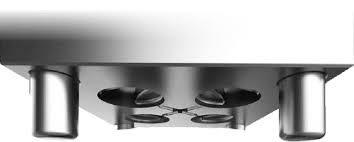Things to Know about the Process of Injection Molding
The industrial science of molding plastic resins into useable forms has had a huge impact on human civilization. Injection molding looks like this. Developed in the 1930s, metal die casting serves as the foundation for modern industrial design and manufacture. Alternative approaches to manufacturing are just one of the modern advantages of Injection Molding Parts. Plastic molding offcuts can be melted down and repurposed, so there is less waste. While molten metals can be poured into a casting mold, plastic resins require a more forceful Injection Molding Molds process.
Large injection machines are used in the plastic expansion process to push the resins forward through a total of six stages of production. There is everything from miniature spiders for Halloween to massive plastic props.
Although there are only two main parts to an Injection Mold Manufacturers, it may produce complex shapes. Both the Design Injection Mold unit and the attachment unit are necessary. The simplicity of this procedure is quickly grasped.
The injection & cooling procedure begins with a mold being clamped under pressure. After being pumped into Design for Injection Molding barrel and heated to the appropriate melting point, the resins are ready to be used. Then, it was either screwed or forced into the mold.
When the molten plastic is driven down into the mold by mechanical means or hydraulic pressure, this is known as the "dwelling" phase. The mold is left open while the plastic hardens.
The mold can be accessed by breaking it in half lengthwise. Prototype Product Design penultimate stage involves using pins to extract the plastic. Runners are little, unneeded pieces that may be included in the product. These runners are merely mended before being reused. There are cycles throughout, with some lasting as long as 100 seconds.
The plastic molding company's policy and the cooling time will determine the answer. It is noteworthy to note that the melting equation must account for the shrinkage value of each different type of resin. Incorrect equations might lead to irregularly shaped or sized final products. The issue of warpage must be avoided as well.
When the temperature is set too high, an uneven surface is formed on the plastic. In addition, it could lead to the mold only being partially filled. Prototype Product Design of high quality requires no exotic materials or pricey plastic molds.
In reactive Plastic Injection Mold Making, "hard tooling" refers to the use of metals other than epoxy, fiberglass, or silicone to create the molds for the final product. Historically, the cost of producing injection molding dies was high, but they could be used repeatedly for mass production. While any tooling choice can be successful, metal molds are often used for the hardest tooling.
The manufacturing company's engineering department can suggest the most effective method for creating the item at hand. Reaction injection molding works very well with aluminum or steel because of the material's low cost and high efficiency with both high and low production volumes.


Comments
Post a Comment